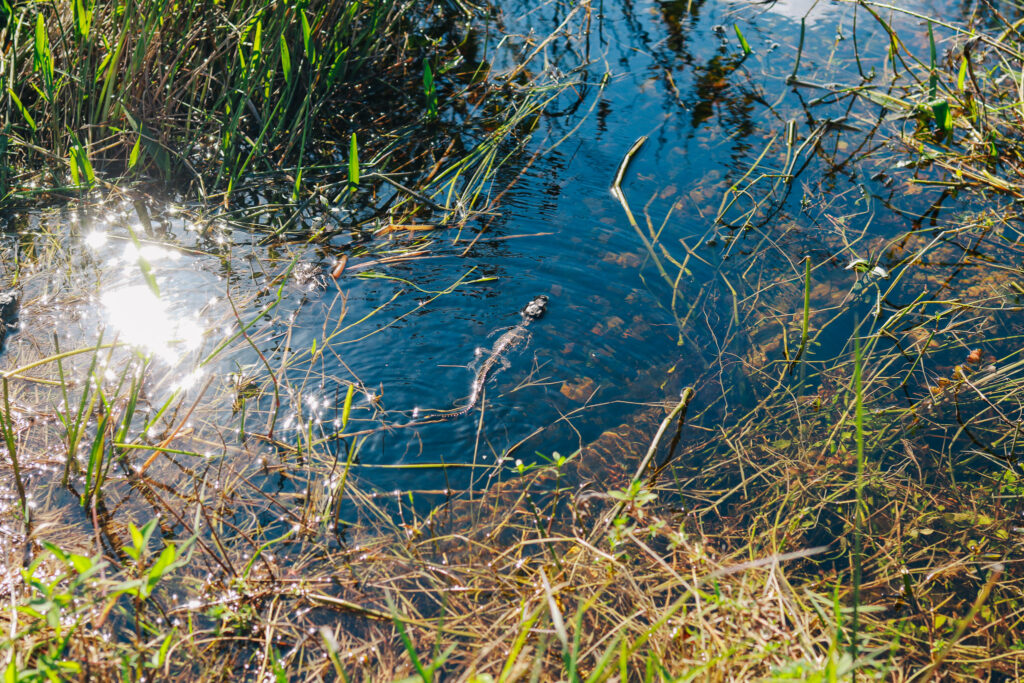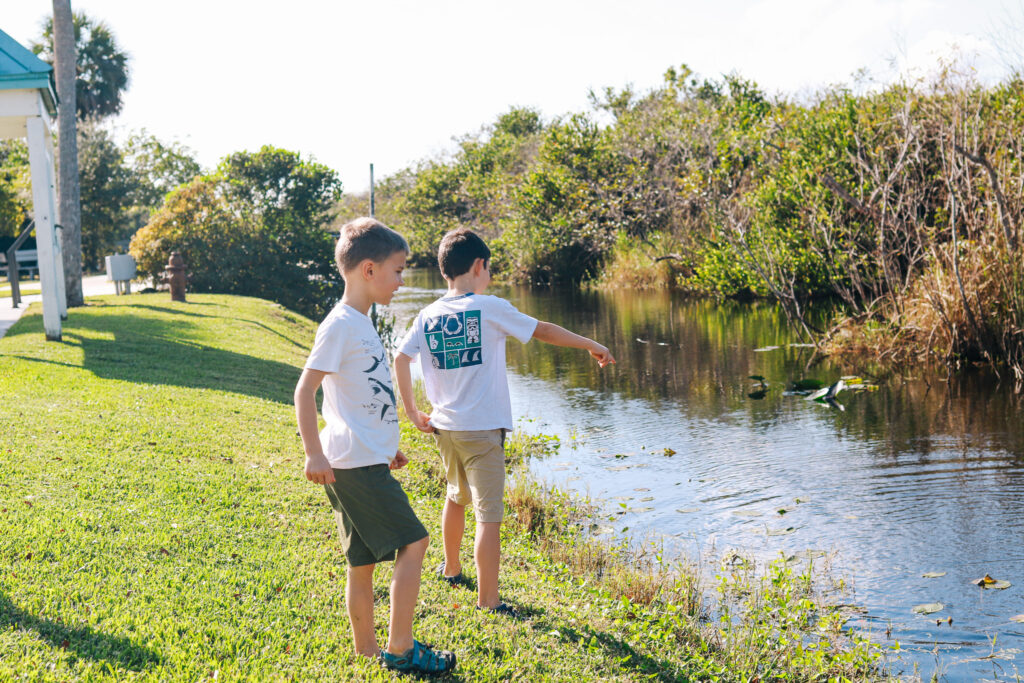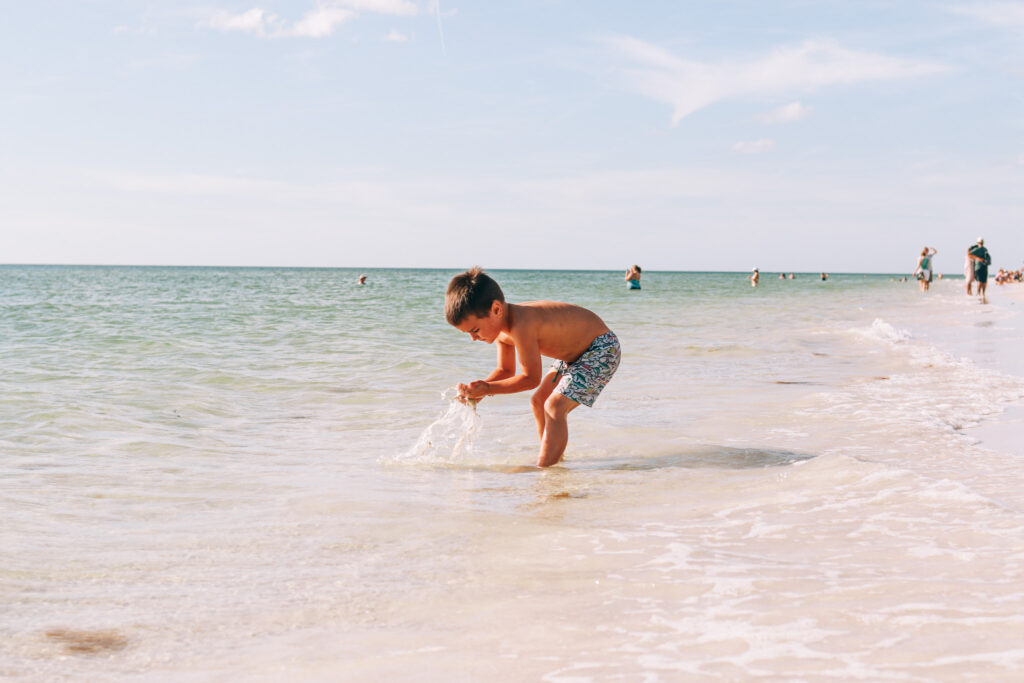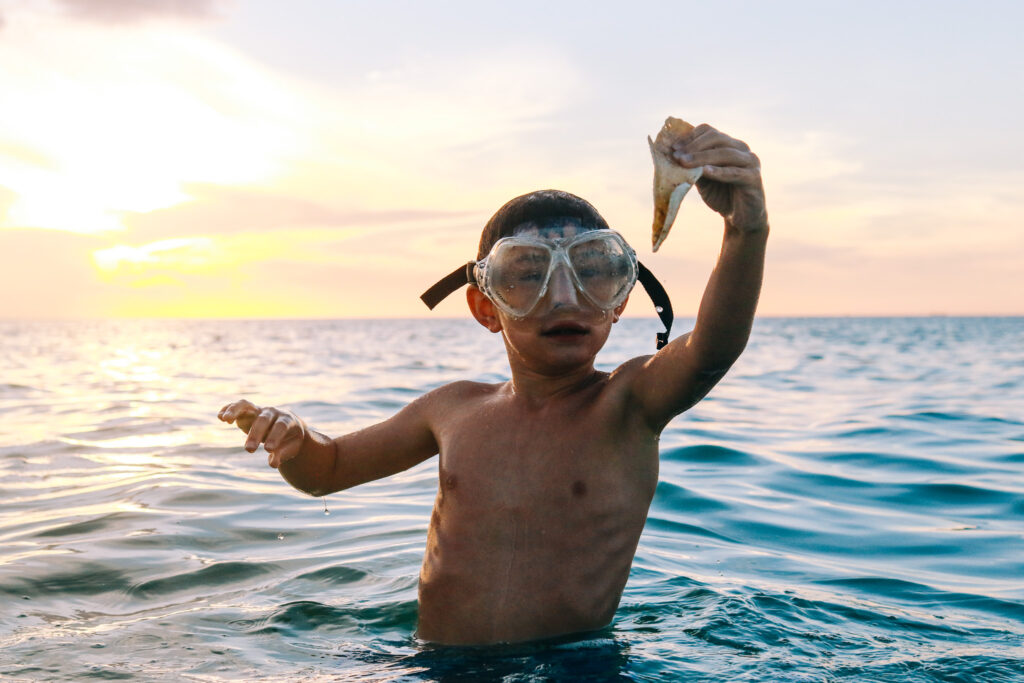You have no items in your cart. Want to get some nice things?
Go shopping
In December 2021 my husband and I surprised our boys with an early Christmas gift: a weeklong trip to Florida, to visit Everglades National Park. We wrapped a suitcase filled with swimsuits, snorkeling gear, and plane tickets. When they first opened it they were confused, but they quickly realized what it all meant! Our flight left that evening so they had just enough time to pack and get in the car. It was such a wonderful surprise!
Our itinerary included Everglade and Biscayne National Parks, Key Largo and Key West, as well as multiple beaches along the Atlantic and Gulf of Mexico.
The following is a simple study and travel guide to use before, during, and after your visit to this park.

Overview
A Guide to Everglades National Park by Herber Zim (Digital or Used)
Booklist
- Everglades by Jean Craighead George
- Journey into an Estuary by Rebecca Johnson
- Journey into the Wetlands by Rebecca Johnson
- The Moon of the Alligator by Jean Craighead George
- The Seminoles by Virginia Driving Hawk Snede
Before Your Visit
CAPTAIN IDEAS
Use these statements as a question focus to generate questions and curiosity. See my How to Encourage Inquiry article for details.
- The Everglades is an estuary
- Crocodiles and alligators live in the Everglades
- Keys are not Islands
- Mangrove forests are known as “nurseries”
MAPWORK + MAP QUESTIONS
I like to use the DK Compact World Atlas 5th edition for mapwork.
Look at a map of the Florida Peninsula while asking your children these questions:
- Which body of water lies to the East of Florida? [Atlantic]
- Which body of water lies to the West? [Gulf of Mexico]
- What are the names of the Keys south of Florida? [Largo, Islamorado, Big Pine, Key West, etc]
- Which islands/countries are west of Florida?
- Which islands/countries are south of Florida?
- Point to Everglades National Park. In what part of Florida does it lie? [South]
- Which lake lies north of the Everglades? [Okeechobee]
- What is the name of the bay on the Southeast corner of the Florida coast? [Biscayne Bay]
INTRODUCTION
Read Everglades by Jean Craighead George or watch National Parks: Everglades Documentary by National Geographic.
BIOME
Read Journey into an Estuary and Journey into the Wetlands
NATURE STUDY
Read The Moon of the Alligator by Jean Craighead George
HISTORY + CULTURE
The Seminoles by Virginia Driving Hawk Sneve
ADDITIONAL READING
- Black Jack: The Last of the Big Alligators by Robert McClung (Digital)
- Manatee Winter Kathleen Weidner Zoehfeld (Digital or Print)
- Manatee Morning by Jim Arnosky (Digital or Print)
- Screamer: Last of the Eastern Panthers by Robert McClung (Digital)
- Scoop: Last of the Brown Pelicans by Robert McClung (Digital)
- The Sea, The Storm, and the Mangrove Tangle by Lynne Cherry (digital or print)
During Your Visit
The best time to visit is usually in the winter, between December and February. There is less heat, humidity, and biting insects. This national park is really a large estuary where freshwater and saltwater meet. There are many birds that stop here to rest and recharge while migrating, so visiting during December offered a glimpse of some migratory birds.
While exploring the parks, have your child take pictures of plants and animals they discover and write down questions in their travel journals. You may choose to bring some questions for object lessons taken from Handbook of Nature Study by Anna Comstock. Mosquitoes, turtles, flowers, and birds are readily available subjects for object lessons.
Shark Valley Visitor Center
This area of the Everglades is mostly wetlands and some grassland. Walking or biking the paved trails is the best way to explore this part of the park. This was my kids favorite part of the Everglades. You can hike the trails on your own, or pay for a tram tour. The third option is to rent bikes and go at your own pace. We paid for the tram tour and highly recommend it in addition to walking the trails.
While walking we spied alligator hatchlings right on the trail – my boys were ecstatic to see such new little babies a few feet away, and I was deeply concerned with how close the mother must be… but we kept our distance and enjoyed watching them swim around before continuing on our way. On that same hike we also saw an alligator eating a Burmese Python, which was another highlight for the boys. Besides the alligators we saw turtles and a variety of interesting birds. We learned that crocodiles are mostly near the coast where the water is mostly saltwater. They are slightly smaller and more aggressive than alligators.
Big Cypress National Preserve is near Shark River Visitor Center, so it’s worth stopping, but there aren’t as many trails or things to do as the Shark River Visitor Center.
Ernest Coe Visitors Center
This part of the Everglades really showcases estuaries and mangrove forests. The best way to truly explore this part of the park is by boat. We took an airboat tour through the mangrove forests and got some amazing glimpses of birds, fish, crocodiles, and alligators. My boys loved this tour so much it is definitely on our list to do again. Next time we’ll take a boat tour through the wetland part of the Everglades.

Other Places to Explore
Tigertail Beach (Marco Island)
This was one of our top favorite places on our Florida trip. The beach is on the Gulf of Mexico side and the waves were gentle enough for the smallest children. It was packed with shells of all shapes and sizes, and there were live gastropods in the water, so snorkeling was fun for my husband and oldest son.


Frost Science Center (Miami)
This science center was one of the best we’ve ever visited, and we’ve visited science centers all over the country! The architecture and design was very cool, and the exhibits were engaging. It overlooks a beautiful part of Miami as well.
Fort Zachary Taylor (Key West)
Touring this fort was a nice break from all the hiking and beach days. My boys enjoyed seeing all the weapons and other military equipment. It was built right before the Civil War and served as a fortress during that time. If your kids are older they might enjoy learning more about its purpose during the war.
Places we didn’t get to visit, but is on our list for next time:
- Dry Tortuga National Park (Key West)
- Shipwreck Museum (Key West)
- Ah-Tah-Thi-Ki Museum (Clewiston)
- Museum of Science and Discovery (Ft. Lauderdale)
- Loggerhead Marine Center (Juno Beach)
After Your Visit
When you get home, or back to your hotel, reference the photos you took to make nature journal entries.
Go over your child’s questions and help them research answers. Record answers in their travel or nature journal.
Have your child record their day (narrating) or dictating it to you while you write it down in their journal. Draw pictures, too.
My kids love making Powerpoint presentations of their visit – pictures, journal entries, and fun facts– and then presenting to friends and family.
Download and Print
Download and print the guide to use for your own adventures!
